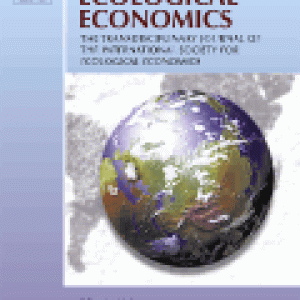
This paper investigates the environmental impact of the diets of Australian households at different income quintiles. The paper looked at 2003 household consumption and argues that income affects the environmental impacts of household diet, with higher income corresponding to higher impacts. The higher the income bracket the more was spent on food and this translated through to a higher environmental impact (GHG CO2e, water, waste, energy) at higher incomes.
The environmental footprint changed as consumption/diet changed to reflect the change of diet. Shifts in dietary preferences between income brackets change the ‘footprints’ at each level, and mean that increased eating out could be environmentally ‘beneficial’ for higher income brackets. This is because foods eaten out may be produced/prepared in more environmentally efficient ways than those prepared in the home. Overall, increasing fruit and veg consumption was seen as a positive method of decreasing impacts.
From the analysis the authors could determine the ‘per dollar spent’ impacts - and provide discussion on where to target interventions based on income - they raise the question of which quintiles is it cost effective to target, as the high incomes have the largest impact, and 'should' have possible capacity to change their behaviour.
Abstract
This paper uses input–output analysis to model the environmental impacts of the weekly food consumption of Australia's households sorted by income quintile in 2003. We found that weekly food consumption of the relatively better off households caused greater environmental burden than that of the less well-off household. Meat and bakery products/flour/cereals were the categories that contributed the largest share of environmental impacts in an average household's food consumption footprint: 58% water, 26% energy, 29% CO2, and 31% wasted materials. Per dollar spent, fruit and vegetables generated 0.0874 m3 of water, 0.0055 GJ of energy, 0.37 kg of CO2, and 0.0114 kg of wasted materials. This was lower than the per dollar impacts of bakery products (0.8482, 0.0067, 0.63, 0.0204), meat (0.3471, 0.0070, 0.65, 0.0203), dairy (0.0995, 0.0114, 0.98, 0.0192), and edible fats (0.2373, 0.0080, 0.70, 0.0165). Eating out and fast food consumption also had a low per dollar impact (0.1317, 0.0046, 0.38, 0.0141). We surmise that substituting fruit and vegetables at the expense of animal products, processed foods, and fats would decrease environmental impacts. Change at low income levels should be focused upon meat, bakery and dairy consumption, while higher incomes should be focused upon the consequences of eating food outside the home.
Citation
Reynolds, C. J., Piantadosia, J., Buckley, J. D., Weinsteind, P., Bolanda, J., 2015, Evaluation of the environmental impact of weekly food consumption in different socio-economic households in Australia using environmentally extended input–output analysis, Ecological Economics 111, 58–64
Read the full paper here.
You can find other resources on our website related to various determinants of consumption and environmental impact here as well as input-output analysis here.







Post a new comment »